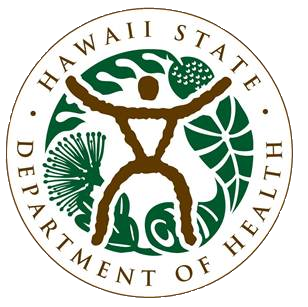| Invasive HRTP activities include, but are not limited to the following: | Additional invasive work will occur during the construction of: |
| Geotechnical boring | Method shafts and/or test shafts |
| Potholing | Production shafts |
| Exploratory trenching for archaeological investigation | 21 (twenty-one) train stations |
| Grading | 4 (four) park and ride facilities |
| Sewer jacketing | 4 (four) new transit centers |
| Utility and tree relocation | 1 (one) maintenance and storage facility |
Honolulu Rail Transit
HEER OFFICE PARTNERS WITH SOLID AND HAZARDOUS WASTE BRANCH TO OVERSEE HONOLULU RAIL TRANSIT PROJECT
OVERVIEW
PROGRAMMATIC EHE-EHMP
In order to streamline the construction and oversight process while ensuring protection of human health and the environment, the HEER Office and SHWB allowed HART to develop one overarching document that would identify known/potential areas of contamination, discuss hazards and exposure pathways of identified types of contamination, and outline protocols their contractors will follow to manage soil, groundwater, and other media during construction.
The Programmatic EHE-EHMP is a tool that:
- records joint decisions that have been made between HART and HDOH throughout the course of the project. The document ties policy-level decisions to instructions for implementation in the field
- documents release reporting procedures, in the event HART encounters existing contamination during invasive activities
- Appendix D of the Programmatic EHE-EHMP contains forms HART developed to communicate with their contractors and document that the contractors are following the agreed-upon procedures to identify contamination and manage clean and contaminated media during construction.
HDOH and HART both agree that unexpected situations may arise during fieldwork. HRTP is particularly complex, engages several layers of contractors, will take place for several years, and involves a variety of field conditions. Therefore, the Programmatic EHE-EHMP was designed to be thorough and specific, but dynamic.
The version of the Programmatic EHE-EHMP linked on this page took several years to develop and is the most current version approved by both HART and HDOH. It was signed by HART Executive Director and CEO, Daniel Grabauskas, on December 19, 2014 and Hawaiʻi Department of Health, (Former) Deputy Director, Gary Gill, on January 9, 2015.
ADDITIONAL HONOLULU RAIL TRANSIT PROJECT DOCUMENTS
The Programmatic EHE-EHMP is robust enough to be protective of human health and the environment when HART contractors work in most of the areas of known or potential contamination along the HRTP project area.
This map depicts sites identified by HART through public records searches and communication with the HEER Office and SHWB.
-
- PURPLE POLYGONS: Sites with existing Land Use Controls and EHMPs.
- ORANGE POLYGONS WIH DOTTED LINES: Areas and properties with known or suspected contamination that have not been fully characterized. The HEER Office has requested that HART complete additional characterization and develop location-specific EHMPs prior to breaking ground in these areas.
- RED POLYGONS WITH DOTTED LINES: Areas where HDOH anticipates environmental investigations before HART breaks ground.
- GREEN OUTLINES: Sites where HART has done additional characterization and developed Site-Specific EHE-EHMPs. Summaries of these activities and links to relevant documents are provided in the following sections.
